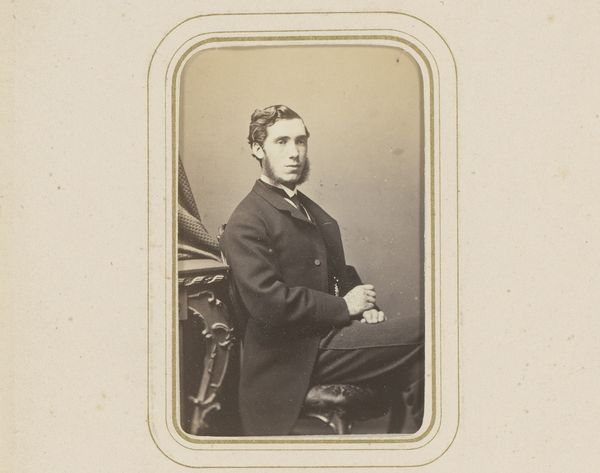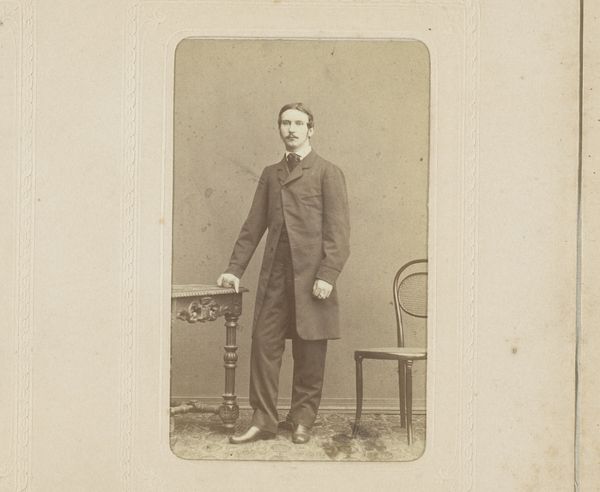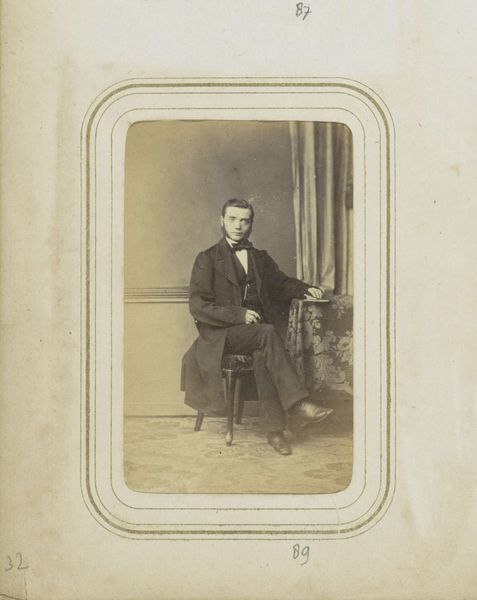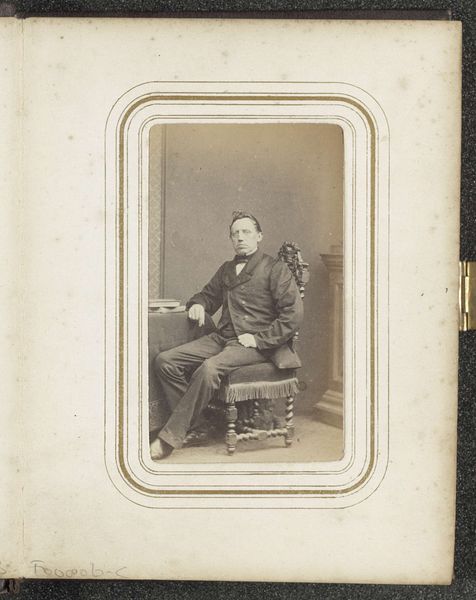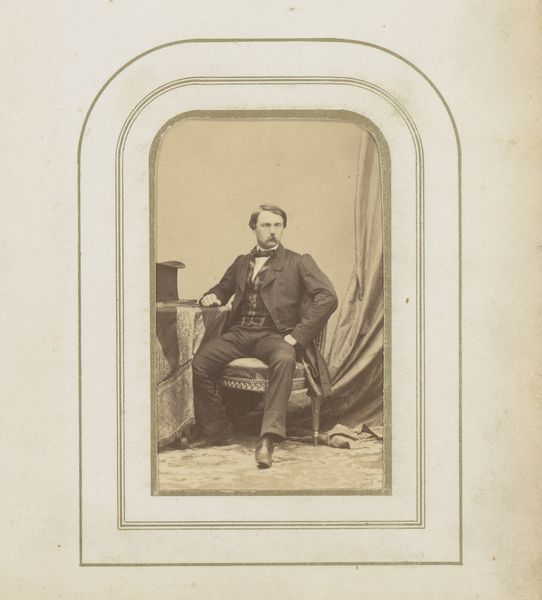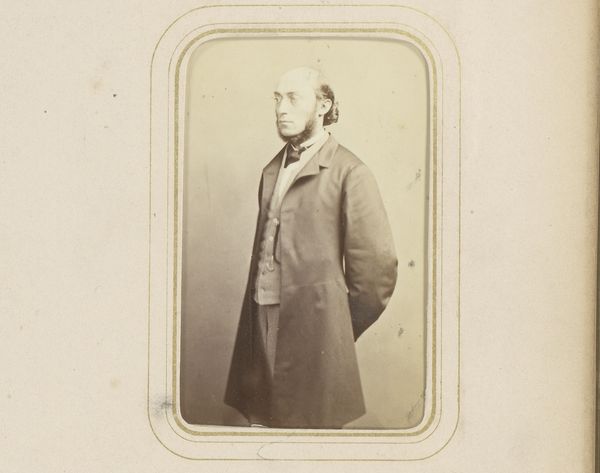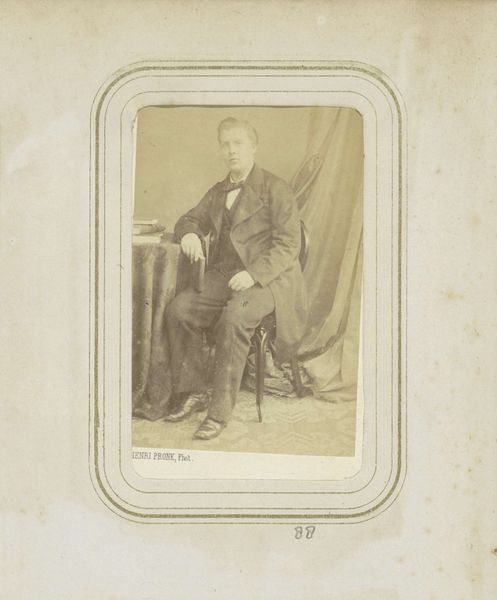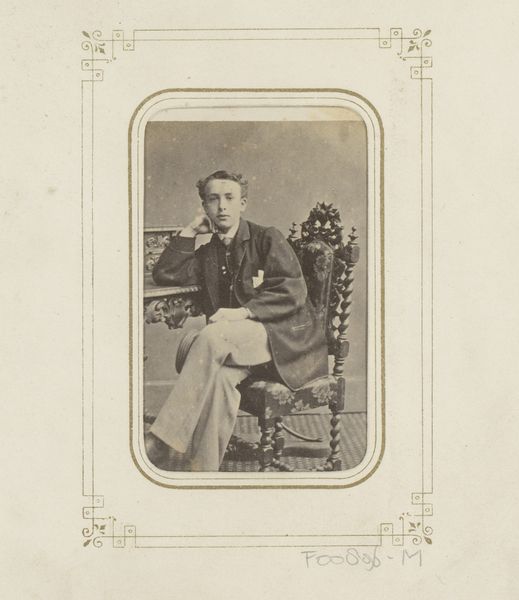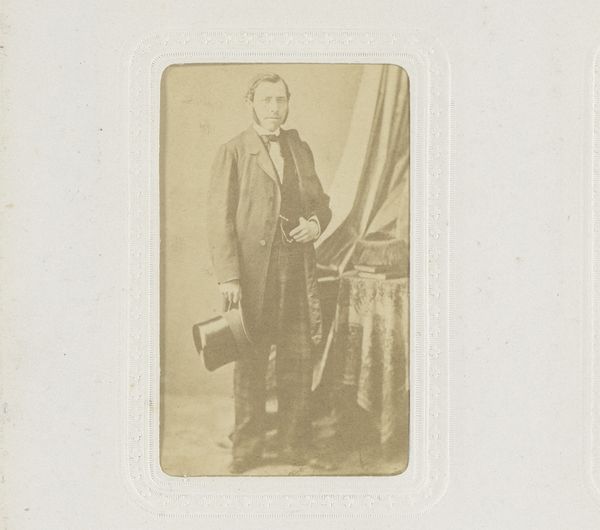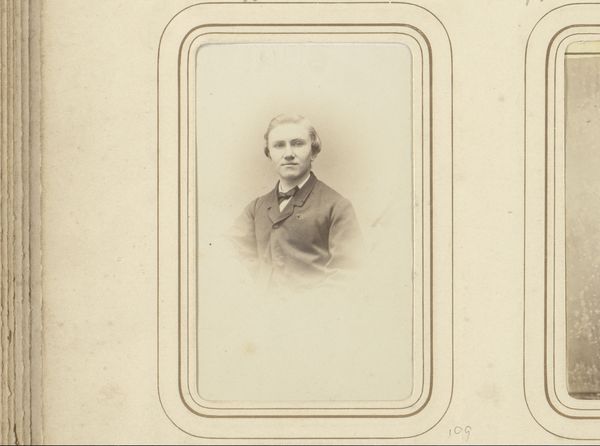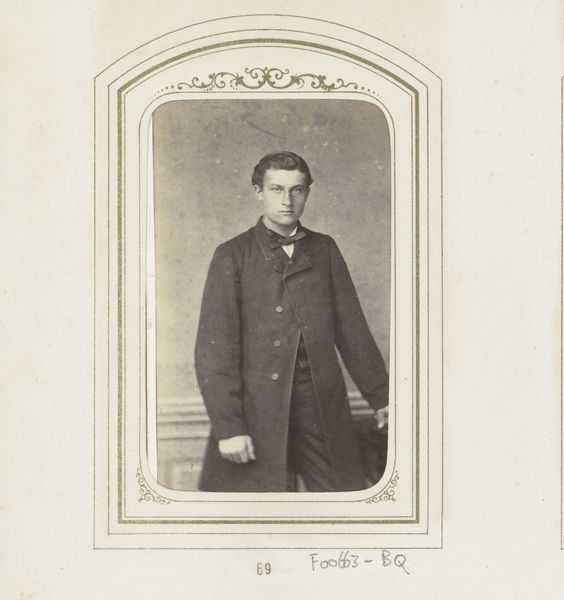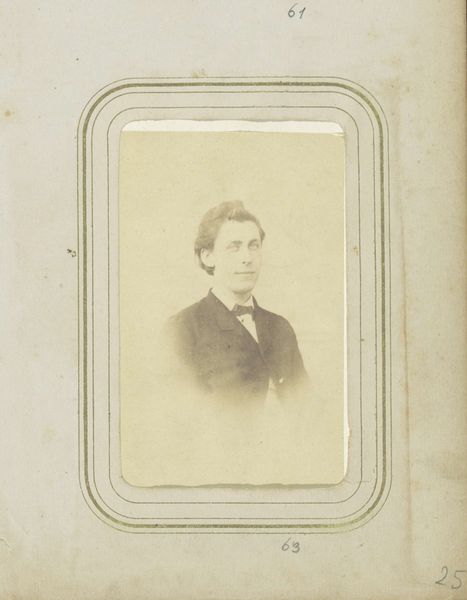
daguerreotype, photography
#
portrait
#
aged paper
#
light pencil work
#
16_19th-century
#
vintage
#
photo restoration
#
colourisation
#
daguerreotype
#
archive photography
#
photography
#
historical photography
#
historical fashion
#
old-timey
#
19th century
Dimensions: height 86 mm, width 53 mm
Copyright: Rijks Museum: Open Domain
Curator: I am immediately drawn into the solemn stillness of this piece. The man's crossed arms suggest a deep pensiveness, almost defiance. Editor: The mood definitely speaks to the austerity typical of 19th-century portraiture. Let's contextualize it. We’re looking at "Portret van een zittende man met bakkenbaarden," or "Portrait of a Seated Man with Sideburns," attributed to Alexandre Ken, dating between 1850 and 1874. It's a daguerreotype, a very early photographic process. Curator: The daguerreotype adds so much weight. Those first photographs held a kind of spiritual significance; to capture an image was seen almost as capturing the soul. Editor: Precisely. Think about the labour involved! Each plate painstakingly prepared, exposed, and developed. It wasn't about mass consumption but individualized, deliberate work. The sittings themselves were long and arduous for the subject too. Curator: And that patience, that stillness, comes across. Look at the desk and drapery in the background, they contribute to the creation of a stage. The subject himself projects status but also some personal unease. Editor: Right, and beyond the process itself, it makes me consider the man's coat and bow tie as material indicators of class and social mobility in the period. Curator: Agreed. His sideburns also place him within a certain fashion, almost a silent statement of belonging to a particular group or ideology. The image, therefore, acts as a coded text to decipher the language of status, self-image, and group identity. Editor: Yes! And perhaps how those codes were becoming increasingly fixed and formalized through visual technologies like photography. Curator: This daguerreotype offers us not just a man’s portrait, but also a cultural artefact speaking to complex 19th-century identities and representational strategies. Editor: Indeed, by considering process, materials and history we've illuminated this seated gentleman and also photography’s emerging power to categorize, record, and project status.
Comments
No comments
Be the first to comment and join the conversation on the ultimate creative platform.
